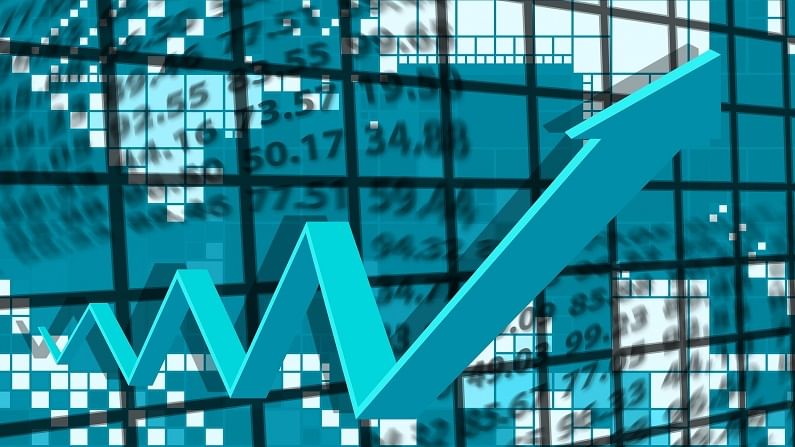Economy recovering due to targeted fiscal relief, rapid vaccination: Finance Ministry
Maintaining a rapid pace on vaccination would emerge as the most sustainable stimulus for durable recovery of the Indian economy
- Press Trust of India
- Last Updated : July 9, 2021, 15:17 IST

The Finance Ministry has said the economy has started showing signs of revival from the impact of the second wave of the Covid-19 pandemic on the back of targeted fiscal relief, monetary policy, and a rapid vaccination drive. “The broad-based economic relief package, extended to mitigate the second wave, amounted to Rs 6.29 lakh crore.
RBI continues with its efforts to calm the nerves of the market and revive sectors with both backward and forward linkages and multiplier effects on growth,” the ministry said in its monthly economic review. To stimulate the economy and ease the financial impact of the coronavirus pandemic and lockdown, Finance Minister Nirmala Sitaraman last month announced eight economic measures amounting to Rs 6.29 lakh crore to provide relief to individuals as well as businesses in the country.
Economic relief measures
Apart from eight relief measures announced in health and other worst affected sectors, Sitharaman announced a stimulus package for the tourism industry, which included five lakh tourist visas to be issued free of charge, once the government resumes issuance. The total financial implication of the scheme will be Rs 100 crore. Resilient tax collections of the central government in the first two months of FY 2020-21 and sustained momentum in capital expenditure, particularly in the road and rail sector, the report said, augurs well for continued economic recovery driven by capital expenditures.
The report further added that the recently announced economic relief package was “expected to further oil the wheels of the Capex cycle via implementation of the PLI scheme and streamlining of processes for PPP Projects and Asset Monetisation”.
Consumption sentiment is expected to pick up with further enhancement of employment support under Aatmanirbhar Bharat Rozgar Yojana (ANBRY), targeted support to the urban poor through the credit guarantee scheme for on-lending by micro-finance institutions and wider Bharat-Net digitisation coverage, the economic review for June said.
Free food-grain and enhanced fertiliser subsidies under the package along with continued MGNREGA implementation, on the other hand, would serve as a cushion for rural demand in the coming quarters, it said.
Vaccination will pace up growth
“Maintaining a rapid pace on vaccination and quickly bridging health care infrastructure gaps across both urban and rural areas would emerge as the most sustainable stimulus for durable recovery of the Indian economy,” the report added. Going forward, it said, further expansion of vaccination and strict adherence to Covid-appropriate behaviour will be a critical safeguard against the emergence of a possible third wave.
On high food prices, the report said, healthy monsoon coverage, gradually rising Kharif sowing and unlocking of states is expected to ease food, and thereby headline inflation. However, it said, risks due to global demand-led recovery in commodity prices and input cost pressures remain. About global economic growth, it said this has continued its upward trajectory in June 2021. Falling Covid-19 infections and accelerating vaccinations consolidated US recovery and renewed growth prospects in the Euro Area, it said, adding global trade remained buoyant with an uptick in global commercial flight and port activity, which portends well for Indian exports. However, it said, the resurgence of delta variant infections, firming inflationary pressures, unequal access to vaccination and burgeoning debt levels continue to lend substantial uncertainty to the global economic outlook.
Download Money9 App for the latest updates on Personal Finance.
Related
- अमेरिकी टैरिफ से भारत में महंगाई बढ़ने, रोजगार जाने का रिस्क नहीं: अर्थशास्त्री
- RBI: खपत में आ रही तेजी, आंकडे दे रहे गवाही जल्द हाई ग्रोथ ट्रैक पर लौटेगी अर्थव्यवस्था
- मुंबई में पेट्रोल-डीजल वाहनों पर बैन को लेकर हो रहा विचार, सरकार ने स्टडी करने के लिए बनाई कमेटी
- SBI ने घटाया GDP ग्रोथ रेट का अनुमान, FY-25 में 6.3% से इकोनॉमी के बढ़ने की उम्मीद
- देश की आर्थिक गति बरकरार, 6.5 से 7 फीसदी ग्रोथ हासिल करने की उम्मीद
- भाविश अग्रवाल ने बताई ओला के मुनाफे की रूपरेखा, इलेक्ट्रिक कार पर नहीं है फोकस

